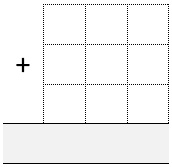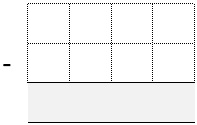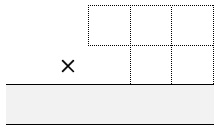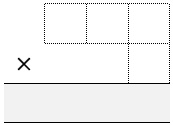Chancy Operations Games
 This collection of 6 games gives practice in addition, subtraction, multiplication and division of whole numbers and you can easily adapt them to include negative numbers and decimals. To win these games you will need to understand place value and how the calculations work and be able to estimate the results of calculations. These games follow on from Games of Chance.
This collection of 6 games gives practice in addition, subtraction, multiplication and division of whole numbers and you can easily adapt them to include negative numbers and decimals. To win these games you will need to understand place value and how the calculations work and be able to estimate the results of calculations. These games follow on from Games of Chance.
Find a partner and make a 0-9 spinner like the one in the picture. . Click here for a template to make your spinner. Mark in the lines in the template and cut it out. You will need a paper clip and a pin. Open out the paper clip and pin the paper clip and the template down on a flat surface so that the paper clip spins easily. You could use a dice but a 0-9 spinner is better.
Take turns to spin the spinner or throw the dice and decide which of your cells to fill. This can be done in two ways: either fill in each cell as you throw the dice (which involves more luck), or collect all your numbers and then decide where to place them (which involves more reasoning).
 CHANCY OPERATIONS GAME 1 – ADDITION
CHANCY OPERATIONS GAME 1 – ADDITION
Each player draws an addition grid like this.
Spin the spinner nine times each until all the cells are full.
Whoever has the sum closest to 1000 wins.
There are two possible scoring systems:
1) A point for a win. The first person to reach 10 wins the game.
2) Each player keeps a running total of their “penalty points”, the difference between their result and 1000 after each round. First to 5000 loses.
You can vary the target to make it easier or more difficult.
 CHANCY OPERATIONS GAME 2 – SUBTRACTION
CHANCY OPERATIONS GAME 2 – SUBTRACTION
Each player draws a subtraction grid like this.
Each player spins the spinner or throws the dice eight times until all the cells are full. Whoever has the difference closest to 1000 wins.
There are two possible scoring systems:
1) A point for a win. The first person to reach 10 wins the game.
2) Each player keeps a running total of their “penalty points”, the difference between their result and 1000 after each round. First to 5000 loses.
You can vary the target to make it easier or more difficult, perhaps including negative numbers as your target.
CHANCY OPERATIONS GAME 3 – MULTIPLICATION
Each play draws a multiplication grid like this.
Spin the spinner or throw the dice four times each until all the cells are full.
Whoever has the product closest to 1000 wins.
There are two possible scoring systems:
1) A point for a win. The first person to reach 10 wins the game.
2) Each player keeps a running total of their “penalty points”, the difference between their result and 1000 after each round. First to 5000 loses.
You can vary the target to make it easier or more difficult.
 CHANCY OPERATIONS GAME 4 – 3 DIGIT BY 2 DIGIT MULTIPLICATION
CHANCY OPERATIONS GAME 4 – 3 DIGIT BY 2 DIGIT MULTIPLICATION
Each player draws a multiplication grid like this.
Spin the spinner or throw the dice five times each until all the cells are full.
Whoever has the product closest to 10000 wins.
There are two possible scoring systems:
1) A point for a win. The first person to reach 10 wins the game.
2) Each player keeps a running total of their “penalty points”, the difference between their result and 10000 after each round. First to 10000 loses.
You can vary the target to make it easier or more difficult.
CHANCY OPERATIONS GAME 5 – DIVISION
Each player draws a division grid like this.
Spin the spinner or throw the dice five times each until all the cells are full.
Whoever has the answer closest to 1000 wins.
There are two possible scoring systems:
1) A point for a win. The first person to reach 10 wins the game.
2) Each player keeps a running total of their “penalty points”, the difference between their result and 1000 after each round. First to 5000 loses.
You can vary the target to make it easier or more difficult.
You could introduce a decimal point. The decimal point could take up one of the cells so the dice would only need to be thrown four times by each player. You will need to decide on an appropriate target.
 CHANCY OPERATIONS GAME 6 – 4 DIGITS DIVIDED BY 2 DIGITS
CHANCY OPERATIONS GAME 6 – 4 DIGITS DIVIDED BY 2 DIGITS
Each player draws a division grid like this.
Spin the spinner or throw the dice six times each until all the cells are full.
Whoever has the answer closest to 100 wins.
There are two possible scoring systems:
1) A point for a win. The first person to reach 10 wins the game.
2) Each player keeps a running total of their “penalty points”, the difference between their result and 100 after each round. First to 500 loses.
You can vary the target to make it easier or more difficult.
Click here for a template to make your spinners.
South Africa COVID-19 News
Here is the official website for COVID-19 updates.
Login
SUPPORT AIMSSEC







